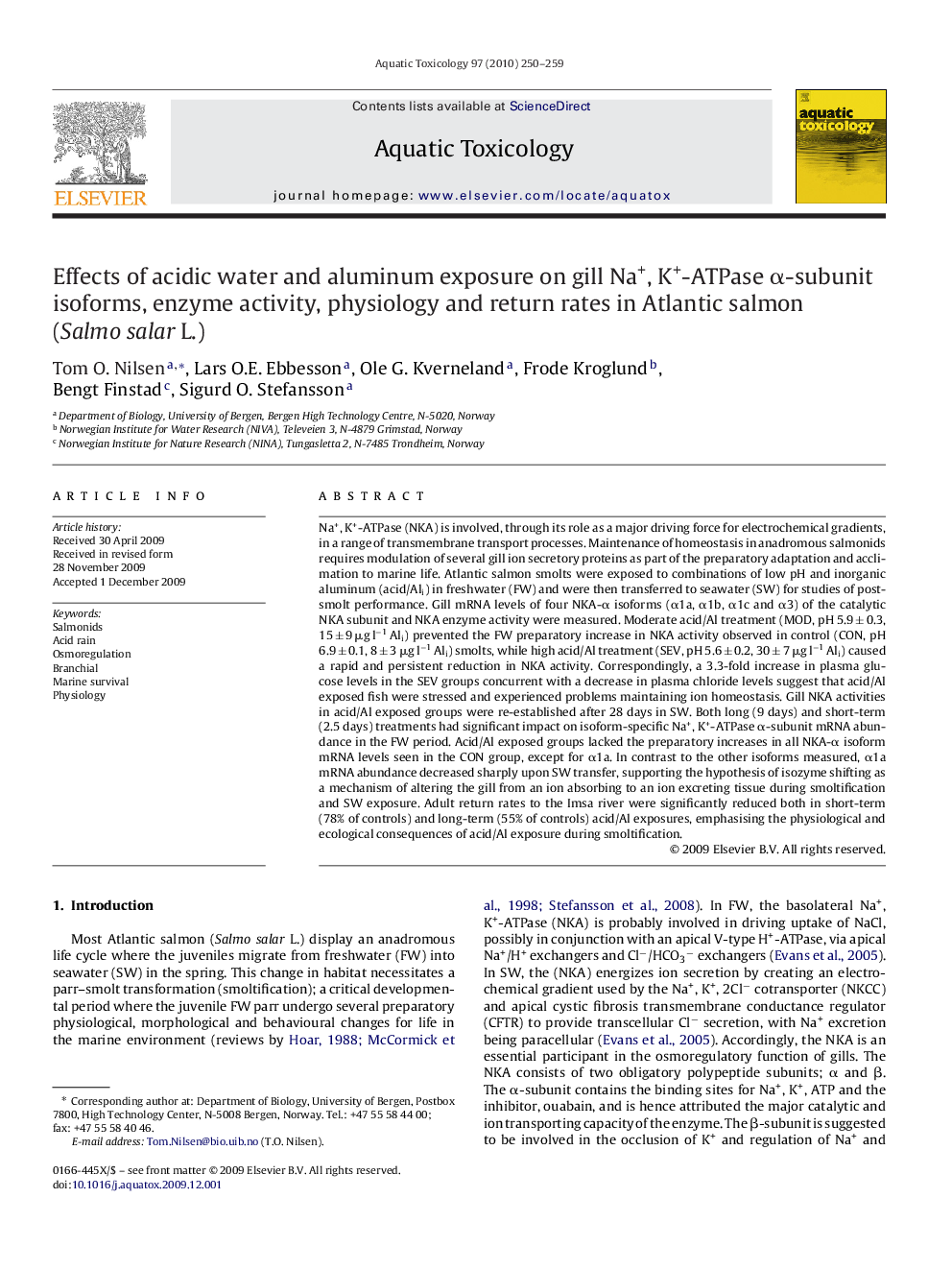| کد مقاله | کد نشریه | سال انتشار | مقاله انگلیسی | نسخه تمام متن |
|---|---|---|---|---|
| 4530279 | 1324693 | 2010 | 10 صفحه PDF | دانلود رایگان |

Na+, K+-ATPase (NKA) is involved, through its role as a major driving force for electrochemical gradients, in a range of transmembrane transport processes. Maintenance of homeostasis in anadromous salmonids requires modulation of several gill ion secretory proteins as part of the preparatory adaptation and acclimation to marine life. Atlantic salmon smolts were exposed to combinations of low pH and inorganic aluminum (acid/Ali) in freshwater (FW) and were then transferred to seawater (SW) for studies of post-smolt performance. Gill mRNA levels of four NKA-α isoforms (α1a, α1b, α1c and α3) of the catalytic NKA subunit and NKA enzyme activity were measured. Moderate acid/Al treatment (MOD, pH 5.9 ± 0.3, 15 ± 9 μg l−1 Ali) prevented the FW preparatory increase in NKA activity observed in control (CON, pH 6.9 ± 0.1, 8 ± 3 μg l−1 Ali) smolts, while high acid/Al treatment (SEV, pH 5.6 ± 0.2, 30 ± 7 μg l−1 Ali) caused a rapid and persistent reduction in NKA activity. Correspondingly, a 3.3-fold increase in plasma glucose levels in the SEV groups concurrent with a decrease in plasma chloride levels suggest that acid/Al exposed fish were stressed and experienced problems maintaining ion homeostasis. Gill NKA activities in acid/Al exposed groups were re-established after 28 days in SW. Both long (9 days) and short-term (2.5 days) treatments had significant impact on isoform-specific Na+, K+-ATPase α-subunit mRNA abundance in the FW period. Acid/Al exposed groups lacked the preparatory increases in all NKA-α isoform mRNA levels seen in the CON group, except for α1a. In contrast to the other isoforms measured, α1a mRNA abundance decreased sharply upon SW transfer, supporting the hypothesis of isozyme shifting as a mechanism of altering the gill from an ion absorbing to an ion excreting tissue during smoltification and SW exposure. Adult return rates to the Imsa river were significantly reduced both in short-term (78% of controls) and long-term (55% of controls) acid/Al exposures, emphasising the physiological and ecological consequences of acid/Al exposure during smoltification.
Journal: Aquatic Toxicology - Volume 97, Issue 3, 5 May 2010, Pages 250–259